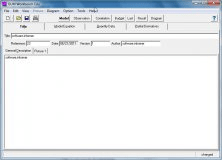The QMSys GUM Software is suitable for the analysis of the uncertainty of physical measurements, chemical analyses and calibrations. The software uses three different methods to calculate the measurement uncertainty:
- GUF Method for linear models - this method is applied to linear and quasi-linear models and corresponds to the GUM Uncertainty Framework. The software calculates the partial derivatives (the first term of a Taylor series) to determine the sensitivity coefficients of the equivalent linear model and then calculates the combined standard uncertainty in accordance with the Gaussian error propagation law.
-GUF Method for nonlinear models - this method is provided for nonlinear models with symmetric distribution of the result quantities. In this method, a series of numerical methods are used – e.g. nonlinear sensitivity analysis, second and third order sensitivity indices, quasi-Monte Carlo with Sobol sequences. The additional influences, such as non-linear relationships, correlations, distribution type or interaction of the input quantities, are also taken into account when calculating the uncertainty contributions. The results obtained with this method coincide with the analytical method remarkably closely.
- Monte-Carlo Method - this method is described in the first supplement to GUM and for many calculations of the uncertainty is the only appropriate method, since the equations of the model are often not linear. In the Monte Carlo technique a suitable distribution is attributed to each input quantity.

The calculations follow the principles given in the DIN/ISO/BIPM Guidelines.

An engineering program for designers, engineers, metrologists and machinist.
Comments